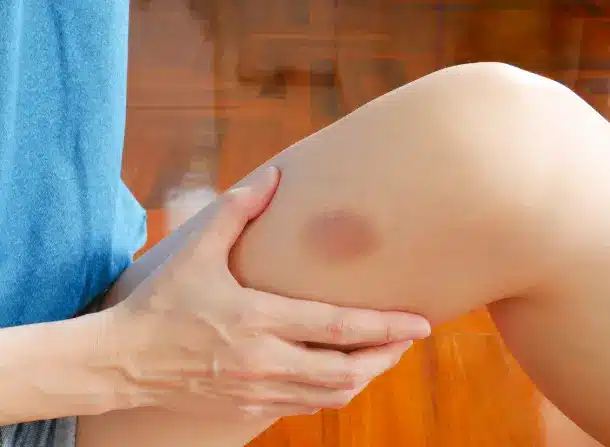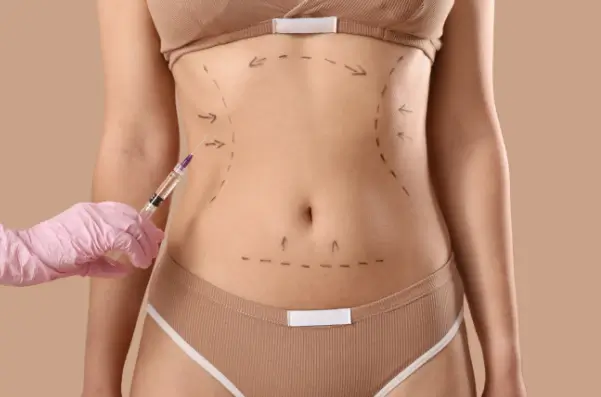A traditional facelift is a complex plastic surgery that helps get rid of wrinkles and deep skin folds, improve the contour of the face, and restore a transition between the chin and the neck. However, not everyone dares undergo surgery.
Cosmetic products (even the most expensive ones) will also not be able to cope with skin aging fully. But we have good news: lifting procedures can be done without surgery. Below we will discuss the least invasive facelift procedures and how they differ.
What is a Minimally Invasive Facelift?
Facial aging is a natural process that involves changes in skin elasticity, muscle tone, and the distribution of subcutaneous fat. Over time, these factors contribute to sagging skin, the formation of wrinkles, and the loss of facial volume. Facelift procedures are designed to address these concerns by lifting and tightening the facial tissues, creating a more youthful and refreshed appearance.
While traditional facelifts have effectively achieved significant results, they often require longer incisions and more extensive tissue manipulation, leading to an extended recovery period and visible scars. Minimally invasive facelift alternatives have emerged to respond to the demand for less aggressive procedures that can provide subtle yet noticeable improvements.
A minimally invasive facelift is a set of procedures performed without surgical intervention. These include injections, ultrasound lifting, laser lifting, etc.
At the core of minimally invasive facelift techniques is achieving optimal results with minimal disruption to the surrounding tissues. These procedures prioritize smaller incisions, targeted lifting, and shorter downtimes. Here are some examples of non-surgical facelift options:
SMAS Lifting
This procedure affects the skin with an ultrasound device. The deep layers of the dermis are affected by pulses. The main goal of SMAS lifting is to provoke the natural production of collagen and elastin. Ultrasonic pulses begin the process of natural facial skin rejuvenation and lift the face.
Advantages of SMAS face lifting:
- High efficiency;
- Longevity – SMAS lifting is a one-time procedure that can be repeated once every 2-3 years;
- Increases skin elasticity;
- Improves the face oval, eliminates the second chin problem;
- Practically painless procedure;
- Can be used not only for the face but also for the whole body.
Disadvantages of SMAS lifting:
- High price;
- Does not have a noticeable effect on significant signs of aging;
- Swelling may persist for a long time after the procedure.
RF Lifting
This skin-lifting procedure is performed using microcurrents. Heat pulses in the deep layers of the skin stimulate collagen production.
The maximum result is achieved 3-4 months after the procedure.
Advantages of RF lifting:
- A lasting effect for up to 2 years;
- Does not have a rehabilitation period;
- Painless procedure.
Disadvantages of RF lifting:
- Ineffective for skin with strong signs of aging;
- Can cause individual intolerance: allergy, tingling, swelling;
- Skin injury is possible in case of incorrect procedure and poor-quality equipment.
Thread Lifting
This procedure involves inserting special meson threads (for example, Silhouette lift) under the skin. It is carried out both on the entire face and on individual zones. The threads have a smooth and jagged structure, which helps them to be better fixed in fabrics.
The rehabilitation period takes place in 2-7 days. The procedure lasts about 1.5-2.5 hours.
Advantages of thread lifting:
- Effective at any age;
- Delicately works with the thin skin around the eyes;
- Long-term effect (2-3 years);
- No scars remain after the procedure.
Disadvantages of thread lifting:
- The face may become asymmetrical in case of improper installation of threads;
- The threads may break (in this case, they must be removed and replaced with new ones);
- This lifting can cause bruises in some areas of the face;
- Unpleasant sensations during the procedure.
Facelift With Dermal Fillers (Contour Plastic Surgery)
The procedure is performed using injections. Special preparations – fillers – are injected into the deep layers of the skin. They can be of different thicknesses and contain HA or other components. Fillers increase the volume of certain parts of the face, and as a result, folds and wrinkles are smoothed out, the face oval is tightened, and clear contours are formed.
Dermal filler lifting is done for lips, cheekbones, eyelids, and forehead. Fillers, Xeomin as an example, can correct the nose’s shape, eliminating scars and facial asymmetry. In general, the effect of the procedure lasts for 10-12 months.
Advantages of contour plastic surgery:
- Quick results;
- Short recovery period;
- Almost no complications.
Disadvantages of contour plastic surgery:
- High cost of fillers;
- The effect is temporary;
- Possible individual intolerance to the filler.
Laser Lift
The laser device stimulates skin regeneration, improves blood circulation and collagen production, and narrows pores. The result of laser lifting lasts 1-3 years and requires only 10 days of rehabilitation.
The procedure does not cause overly painful sensations. In addition to the rejuvenating effect, the skin is also moisturized, the function of the sebaceous glands is regulated, and the skin’s condition and appearance is improved.
Advantages of laser lifting:
- Can be done in 15-30 minutes;
- Launches the natural process of cell rejuvenation;
- Helps in the fight against acne.
Disadvantages of laser lifting:
- High cost of the procedure;
- Peeling of the skin during the rehabilitation period.
Photolifting
This lifting is performed using light flashes. Depending on the problem, the cosmetologist selects the length and frequency of light pulses. This method is considered the most economical and is a less invasive facelift compared to other instrumental methods in cosmetology.
The procedure lasts around 15 minutes. The result can last up to a year, but cosmetologists often recommend repeating the treatment monthly.
Advantages of photolifting:
- Removes small wrinkles, smoothes the face;
- Eliminates pigmentation;
- Improves skin color;
- Stimulates collagen and elastin production.
Disadvantages of photolifting:
- Ineffective for aged skin;
- Does not affect the skin’s deep layers;
- High cost;
- Short-term results.
Conclusion
Minimally invasive facelifts allow patients to achieve natural-looking results with reduced downtime and scarring. These procedures are ideally suited for people with mild to moderate signs of aging who seek subtle yet noticeable improvements. The combination of limited tissue dissection, local anesthesia, and a focus on targeted lifting contributes to the appeal of these techniques.
By carefully considering patient candidacy, setting realistic expectations, and working with quality products and materials, doctors can provide their patients the youthful rejuvenation preserving their unique facial identity with minimally invasive facelifting techniques.
FAQ
Is a minimally invasive facelift safe?
Most nonsurgical facelift treatments are generally safe, but like any medical procedure may cause the following side effects:
- Bleeding;
- Blisters;
- Bruises;
- Dry skin;
- Infection;
- Itchy skin (pruritis);
- Lumps or face asymmetry;
- Peeling skin;
- Scars;
- Skin burns;
- Skin redness;
- Swelling.
Contraindications for minimally invasive facelifting:
- Acne in the acute stage;
- Cold sore outbreaks;
- Eczema and psoriasis;
- Moles, freckles, skin tags, and other skin growths;
- Skin burns, for example, from radiation therapy.
- Skin rashes (contact dermatitis).
What is the least invasive type of facelift?
The least invasive facelift variant is quite often referred to as a non-surgical mini facelift or “short-scar facelift.” This type of facelift has the most substantial effect on reducing visibility of mild to moderate signs of aging in the lower face and neck regions. A feature of this alternative treatment is that it involves smaller incisions and less extensive surgical procedures than traditional facelift procedures. The goal of achieving natural-looking results with minimal scarring and a shorter recovery is realistic with the use of this product.
Mini facelifts are particularly effective for addressing sagging skin and jowls in the lower face and neck. They are not designed to handle more significant mid-face or upper-face aging concerns.
But while a mini facelift offers several advantages in terms of minimal invasiveness and quicker recovery, its effects may not be as dramatic or long-lasting as those of a traditional facelift.
What is the most effective non-surgical facelift?
The individual results of non-surgical facelifts can vary based on skin type, age, and the specific concerns being addressed. Here are a few non-surgical facelift options that are commonly considered most effective:
- Threads lift and tighten sagging areas of the face and stimulate collagen production over time, improving skin firmness. Thread lifts are particularly effective for addressing mild to moderate sagging in the midface, jowls, and neck.
- Dermal fillers can be strategically placed to lift the skin and fill in lines and wrinkles, a trademark effect of Xeomin. HA fillers, such as Juvederm and Restylane, are commonly used for this purpose.
- Botulinum toxin (Botox facelift) temporarily relaxes facial muscles, reducing the appearance of wrinkles and lines caused by facial expressions. While Botox doesn’t provide the same lifting effect as surgical facelifts, it can smooth out dynamic wrinkles and give a more youthful appearance.
- Ultrasound and RF treatments (such as Thermage) use energy to activate collagen production and tighten the skin. These treatments can gradually improve skin laxity and texture over several months.
What is the most natural-looking facelift?
The most natural facelift results are typically achieved through a combination of surgical techniques, artistic skill, and a personalized approach that considers the individual’s unique facial anatomy and aging patterns. A natural-looking facelift aims to rejuvenate the face without creating an overly tight or “pulled” appearance.
Sometimes, a combination of surgical and non-surgical procedures (such as a dermal filler facelift or laser treatments) is best for achieving a balanced and harmonious outcome.
References
Siliprandi, M., Bandi, V., Lisa, A., Vinci, V., Maione, L., & Klinger, F. (2018). Minimally Invasive Face Lifting and Lipofilling. Plastic and Reconstructive Surgery Global Open, 6(2). https://doi.org/10.1097/GOX.0000000000001663.
del Campo, A. F. (2008). Update on Minimally Invasive Face Lift Technique. Aesthetic Surgery Journal, 28(1), 51-61. https://doi.org/10.1016/j.asj.2007.06.006.
Alexiades-Armenakas, M., Rosenberg, D., Renton, B., Dover, J., & Arndt, K. (2010). Blinded, randomized, quantitative grading comparison of minimally invasive, fractional radiofrequency and surgical face-lift to treat skin laxity. Archives of dermatology, 146(4), 396–405. https://doi.org/10.1001/archdermatol.2010.24.
Abraham, R. F., DeFatta, R. J., & Williams, E. F., 3rd (2009).
Thread-lift for facial rejuvenation: assessment of long-term results. Archives of facial plastic surgery, 11(3), 178–183. https://doi.org/10.1001/archfacial.2009.10.





















